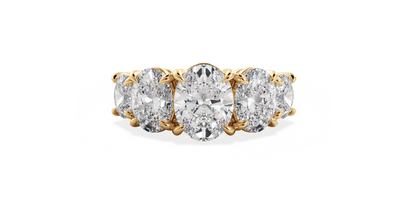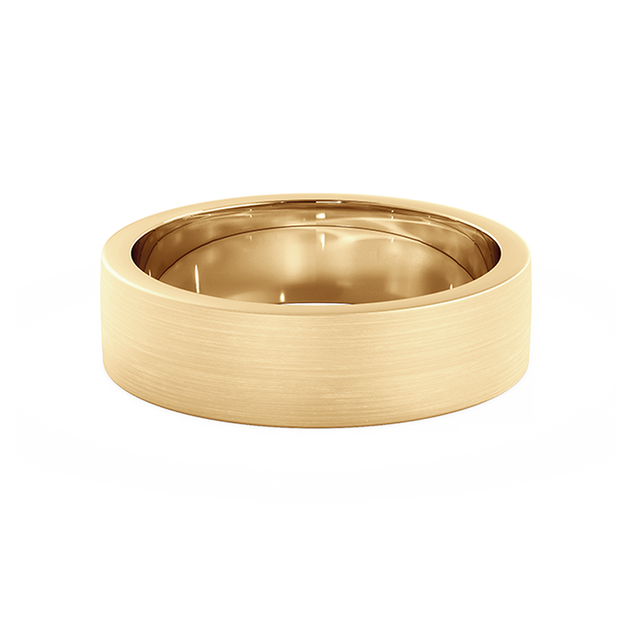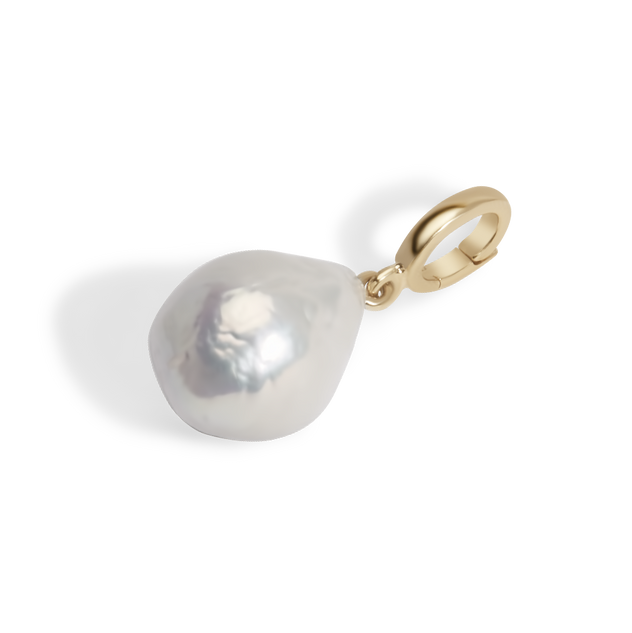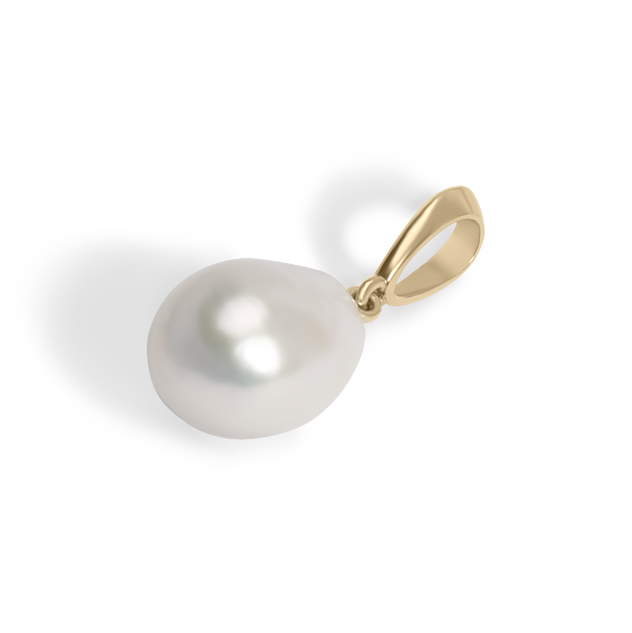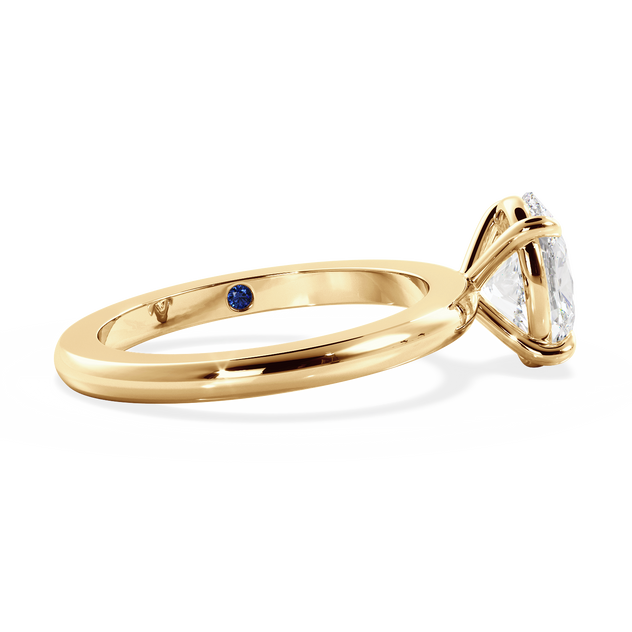Use an existing ring that fits on the ring finger
Round diamonds account for approximately 70-75% of global diamond sales, and around 60% of all engagement rings. This is largely due to their ability to completely maximise the potential for sparkle. All round diamonds have exactly 58 facets and their symmetry offers incredible light interaction. There are many factors to consider when looking for a round diamond for your forever piece, which we encourage you to keep in mind or discuss with your design consultant.
Round Diamond Cut
Each diamond shape will have slightly different characteristics that are important to consider, to help ensure you achieve a stone that is both high-quality, and of course, beautiful to look at too! The cut is how the diamond cutter has taken a diamond rough, and shaped all of the angles and facets of the diamond to create the beautiful stones that we see today. A diamond’s cut is the most important factor that affects how visually beautiful the diamond is to look at, and this is especially the case for rounds. In particular, the depth, angles and faceting of a diamond will determine how well it reflects the light that enters it, and therefore how it sparkles!
Round diamonds are the only shape that is given a specific cut-grading when they are certified. There are specific, measurable global guidelines for the proportions of a round diamond, which means that a round diamond’s beauty can be measured by the amount of light that is reflected internally and externally. There are “Ideal” proportions that ensure that maximum light will reflect through the top of the diamond. At Louise Jean, we strictly work with round shape diamonds that have Excellent or Ideal cut gradings, which sit them at the highest end of the Cut Grading scale for major certifiers such as GIA or IGI.
An Excellent/Ideal cut grade means that a diamond has been cut within parameters that allow the diamond to give off intense brightness, sparkle and fire (called scintillation). It assesses the proportions of the diamond, and the craftsmanship of the cutting to achieve the best polish and perfect symmetry. Poorly cut diamonds often have large light or dark patches that make the stone appear dull to the eye. In particular, the depth percentage of a round shape diamond is very important, and this will affect the sparkle you can visually.
However, while the certified cut grading of a round diamond is important, the cut grading of any diamond on the certificate is not the only indication of how beautiful a diamond may be to look at. It is important to look far beyond the grading on a certificate, to carefully look at the stone itself!
While it is good to consider the proportions of a round diamond’s cut, such as the depth, guidelines for this are always general and are not a set indication of how beautiful your diamond may be. There’s no one set of perfect proportions - the different angles in each diamond can add up to the same, beautiful visual effect. Don’t rely solely on a grading report or certificate to make your choice. Always keep your personal preference in mind and seek guidance from an expert or consultant to help apply these, too.
Round Diamond Colour
Different diamond shapes will also call for different standards of grading characteristics. Some diamonds can hide colour better than others, particularly round diamonds. This is because round diamonds reflect more light than other diamond shapes, helping them to mask yellowish tints. At Louise Jean, we source round shapes between a D and H colour grading as a minimum. Diamonds graded D-F are considered colourless, and G-H is near-colourless. This ensures a bright and sparkly stone, with no visible colour.
To the untrained eye, there is generally very little visual difference between a D and an H, however, there can be a significant price difference. 'I' coloured diamonds can present good value in terms of their price, but it is important to note that not all H or I-coloured diamonds are created equal. This is another area where we look beyond the diamond certificate, and carefully consider the visual appearance of the diamond itself. Many of these near-colourless diamonds have undesirable undertones of yellow or grey and are avoided.
We recommend visually comparing the colour of diamond options, instead of immediately rejecting near-colourless stones. Smaller diamonds or those with lower carat weights tend to hide colour better than larger stones - for this reason, the lower the carat weight, the less a premium diamond colour grading may be needed. When opting for a larger stone, you may also need to prioritise colour.

Round Diamond Clarity
Clarity is an assessment of the natural imperfections - known as inclusions and blemishes - present in a diamond. There are many different types of inclusions, but these can be dark spots or marks which affect the visual beauty of your stone. We will consider a wide range of clarity gradings, from Internally Flawless (IF) - SI1. In some cases, SI2 diamonds can be beautiful and present excellent value. In particular, the faceting pattern of round-shaped diamonds also helps them to mask blemishes and inclusions well. For us, the priority is that no matter the clarity grading on paper, we always guarantee that our diamonds will be eye-clean of any inclusions. That is, there will be no imperfections visible unless looking under magnification. This can only be assessed by looking at the diamond itself - either in person or in detailed imagery such as a 360-degree video.
While we will always help to prioritise your own preferences, we don’t specifically source Flawless diamonds, and very rarely Internally Flawless. These carry an enormous premium, purely for the words on the certificate that have no effect on how the diamond actually looks to the eye. Clarity is often mistaken for the diamond cut. As long as your diamond is eye clean, the clarity grading will have no effect on the visual beauty of a diamond, and different clarity gradings cannot be told apart. A carefully considered clarity grading is often one of the best ways to get value from your diamond, allowing you to prioritise cut, carat or colour.
Round Diamond Carat
There are no rules when it comes to the best diamond size and no such thing as the ‘most-popular’. Diamond size is truly a personal preference, and may depend on many factors. This can include the proportions of your own hand, so we recommend trying different diamond sizes to get a feel for what stands out to you.
We certainly don’t believe that bigger is always better, but that this should be a decision that feels like the right fit for the aesthetic that you are envisioning, your lifestyle, and your ideal budget range. Don’t forget that the carat itself is only a measurement of the weight of a diamond - if you are most concerned about the appearance of size, it’s important to pay attention to the dimensions of each stone. Round Diamond Pricing
Round Diamond Pricing
Round diamonds tend to be more expensive per carat than any other diamond shape for a number of reasons. More than anything, the demand for round diamonds is incredibly high, resulting in a higher premium. However, round diamonds also leave a lot of waste of the diamond rough in the cutting process. This means that the yield for each round diamond is relatively low, which drives the price up when compared to other diamond shapes.
